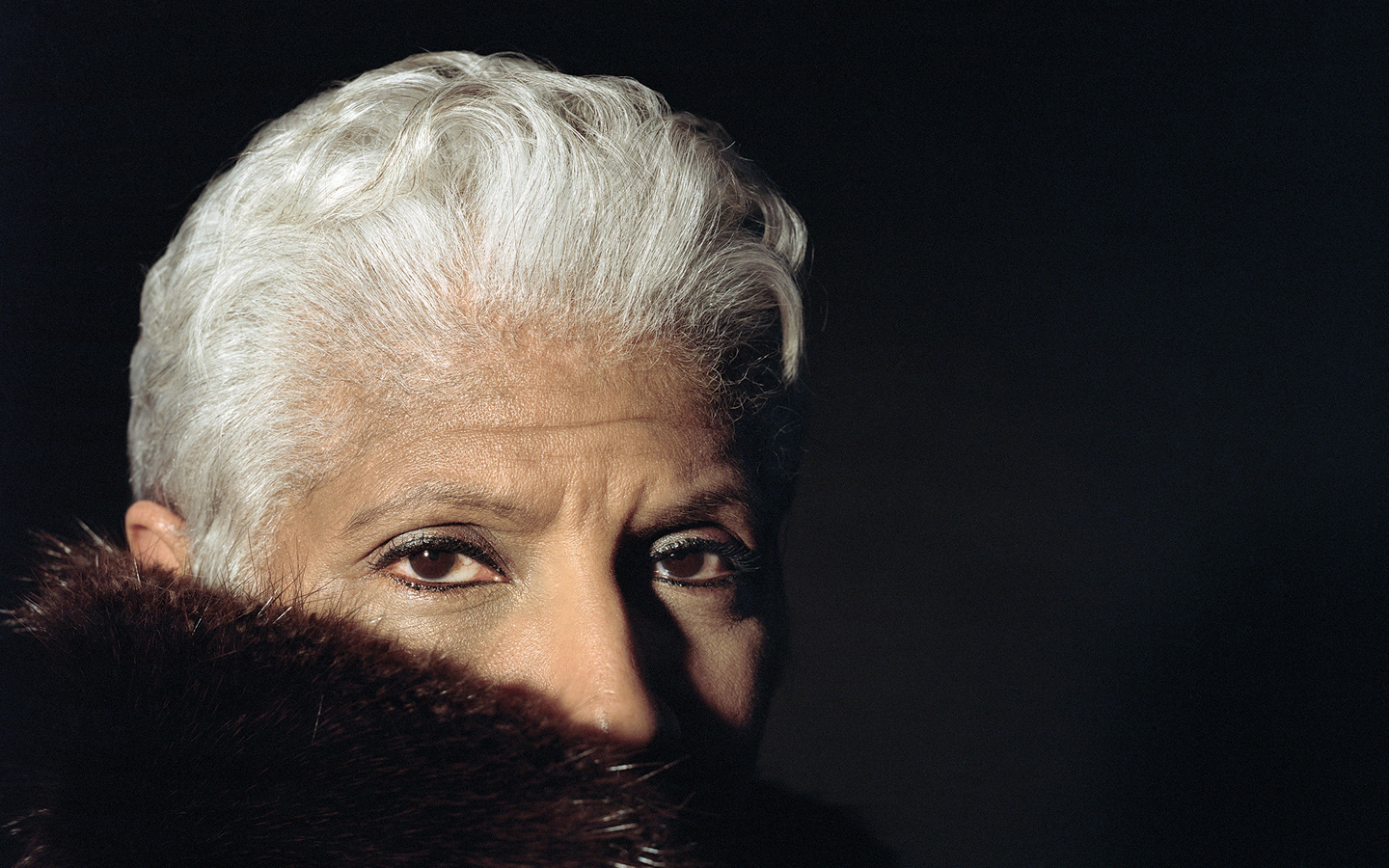
Charmaine Jefferson
TEXT RUTH ADKINS ROBINSON
VISUAL MILANA BURDETTE
What you’re about to read is a tsunami in the form of an editorial. We wanted to warn you, and encourage you. It’s worth experiencing, and it’s astounding that one person could have accomplished so much in a single lifetime. And she’s not done.
California’s winter sun bounced off the close-cropped silver hair of the woman racing across the parking lot at the USC campus. As an activist, arts champion, lawyer, administrator, wife and mother, Charmaine Jefferson is right in her comfort zone: facilitating a panel at the annual conclave of the Internal Association of Blacks in Dance, an organization she’s been part of since its inception.
As a child, her passion for dance consumed her – ballet class at three, a room crammed full of dance posters and magazines, a closet of dance shoes and tap shoes. By age 12, she was starting pointe work. As a teenager, she became involved with the Los Angeles Inner City Cultural Center, where she attended the creative workshops of history-making dancer/ choreographer Donald McKayle. Jefferson would also train in Afro-dance, ultimately joining the troupe of the R’Wanda Lewis Dance Company.
After graduating from UCLA with a Bachelor of Arts in Dance, Charmaine became one of the original touring members of the Margalit Oved Dance Theatre. She spent the early part of her career performing in movies and commercials, modeling, and dancing with pick-up companies. Ultimately she decided to further her education by pursuing a Masters of Arts at New York University in Dance Education. While studying for her masters, she began asking herself what more she should be doing to make a difference in her community and beyond. This line of thinking led her to a role as a Senior Dance Program Specialist for the National Endowment for the Arts in Washington, D.C. While working to expand the aesthetic interest and diversity of the NEA’s dance division, Jefferson simultaneously pursued a Georgetown University Juris Doctor.
As an attorney, she practiced civil litigation with the law firm of Holland and Knight in Tampa, Florida, but was ultimately recruited by Dance Theatre of Harlem’s (DTH) Artistic Director, Arthur Mitchell to become the company’s Executive Director. Her heart leapt at the once-in-a-lifetime opportunity, and she went on to oversee DTH’s $60M school expansion and the company’s NYC seasons, as well as national and international tours, including the landmark Dancing Through Barriers tour of South Africa during the inaugural year of Nelson Mandela’s presidency.
Charmaine distinguishes herself as a champion of both cultural concerns and business administration. She served as Deputy and Acting Commissioner of the New York City Department of Cultural Affairs, served ex-officio on the Board of the Metropolitan Museum of Art, as treasurer of Jacob’s Pillow Dance Festival in the Berkshires, as NYC’s liaison on the development of the National Museum of the American Indian in New York and D.C., co-chaired the Harlem Empowerment Zone, and much more. No wonder she moves at a fast clip.
Charmaine comes from an arts-and-issue-focused family that believes in making changes through education and hard work. Her mother’s brother, John T. Riddle, Jr., was a painter, sculptor, teacher, and curator at the California African American Museum. From an early age, Charmaine recalled the influence of Uncle Johnny’s art. He made powerful works, such as a ceramic African-styled mask glazed in mint green, long before the Black Power movement became popular.
We’re headed down Figueroa Street as Charmaine shifts gears in the manual transmission, her high heels moving effortlessly from brake to clutch to accelerator. She’s recalling her decision to move back to Los Angeles after many triumphs on the East Coast, including ten years of marriage, and a five-year-old daughter.
Thanks to her extensive administrative, legal and planning experience, Charmaine became VP of Business Affairs for de Passe Entertainment. This role allowed her to serve Academy Award-nominated Suzanne de Passe, one of the early ceiling-breaking women in the music and media business. Charmaine would also hold a position with Disney Entertainment Productions as Director of Show Development for the Disneyland and California Adventure resort and theme parks. She enjoyed the job, but ultimately felt a calling to return to the world of nonprofit services.
When the Executive Director position at the state agency California African American Museum (CAAM) became available, her mother didn’t want her to take the job. The family had witnessed the toll it took on Uncle Johnny, the CAAM curator, before he died of a stroke. Prophetically, in the months before his stroke, he had urged Charmaine to consider applying for the Executive Director position. She took his suggestion seriously, ultimately accepting a dual position of Executive Director of CAAM and Vice-President of Friends, the Foundation of CAAM. She would serve in this role for 11 years.
Jefferson parks, and walks toward a smallish building that was once her fortress against economic recession and the misguided voices that suggested there was no longer a need for museums dedicated to African American art and history. Four years after leaving the museum, she remains proud of the progress made during her tenure. California was in a recession when she took the job. Despite a 50% cut in CAAM’s funding and staff positions, Charmaine managed to increase CAAM’s state and private budget, and number of exhibitions and presentations. She also built significant partnerships with other museums in California, created a monthly live performance, and expanded the Young Docents employment training program.
One of her family’s most significant artworks occupies a place of pride on her coffee table as a reminder of her childhood and culture. It is her Uncle Johnny’s ceramic sculpture. It depicts the 1963 bombing of the Birmingham church that killed four little girls of about Charmaine’s then-age. It seared the fearful realization of what it meant to be Black in America into her young heart.
By the front door are two Ethiopian parlor chairs. A 6’ Dogon granary door from Mali leans on the wall near the big picture window. Uncle Johnny’s anti- George Wallace/President Nixon collage hangs over the piano, across the room from Mark Steven Greenfield’s meticulously detailed target painting depicting the complex maze and challenges of black life. A Basquiat hangs on this wall too, not far from Teresa Tolliver’s green nude abstract ceramic figures. Stacks of books and objets d’art make it clear that Charmaine is serious about collecting – no pretension or concern over whether it reflects what the art market says she should own. She believes that for your home, “You should collect that which speaks to you – reflects your interests and passions…you have to look at the art every day.”
Today, Jefferson acts as an executive consultant to the Tom and Ethel Bradley Foundation and operates Kélan Resources, a strategic consulting firm founded to integrate the arts, education and cultural competency into the DNA of live program/exhibition production, workshops, and business management/operations. She continues to fulfill volunteer commitments by serving on the board of Arts for LA and the California Arts Council, among other pursuits. She also maintains active memberships in several groups, including The Museum Group, the Los Angeles Humanities Institute at USC, and Our Authors Study Club.
Charmaine has had an extraordinary past, but she doesn’t live in it, she is grounded by it. With an eye toward the future, she draws upon the experiences of the past – the good and the bad – to strategize her next steps and imagine that which has not yet occurred.
You may also like
Unlocking the Power of Fetish
Fetish is about unlocking the deepest parts of our psyche and allowing them, from time to time, to c
Alex Fink
Alex spends many hours in his shop repairing conventional guitars, but his passion is pushing thebo
Sadie Barnette
“A friend recently asked me, ‘Don’t you want as many people as possible to see your work?’ a




